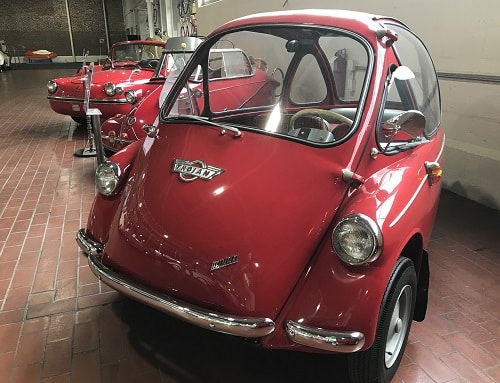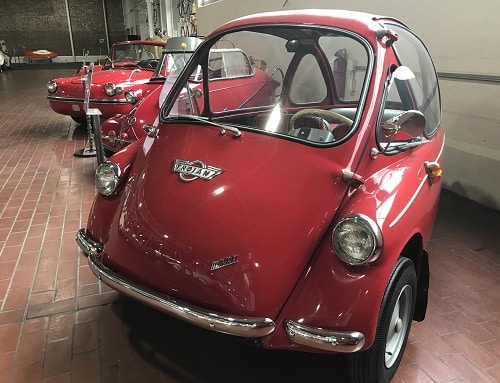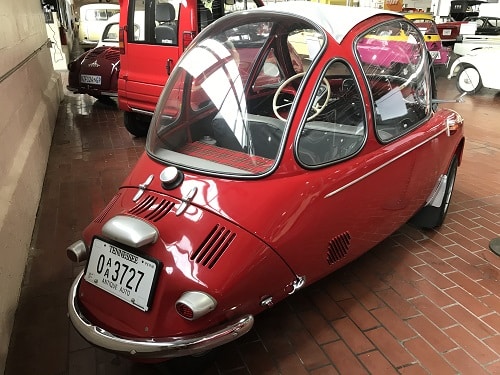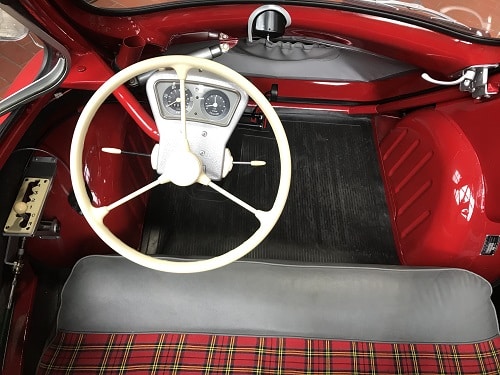
Trojan 200- 1963

Trojan was founded by British engineer Leslie Hounsfield, who sought to make a simple, economical car that was easy to operate. Design began in 1910 and by 1913 a prototype was ready. The advent of World War I caused a delay in production, but in 1922, 100 of Trojan’s “Utility Cars” were ordered by Leyland Motors. Over the next seven years, 16,800 Trojan passenger cars and vans were produced. When the Leyland partnership ended, Trojan introduced the RE (Rear Engine) model at the 1929 London Motor Show. The wood construction, chain drive, rear-only brakes, and no electric starter adhered to Trojan’s core principles of durable yet inexpensive transportation. The low purchase price and high fuel economy, around 40 mpg, made the Trojan RE van very popular with firms requiring small delivery vehicles. The largest order of vans came from Brooke Bond tea, making the car familiar all over Britain.
During WWII, the factory ceased car production to manufacture bomb racks and containers in which supplies could be dropped to troops by parachute. Postwar, Trojan concentrated on producing vans.
Lambretta scooter importer Peter Agg bought Trojan in 1959, about the same time Ernst Heinkel wanted to pivot from producing his German microcars back to airplane manufacturing. A deal was struck, and in 1961 rebadged Heinkel Kabines started rolling off the lines as the Trojan 200, with cars in some markets retaining both badges. Trojan ceased building these bubble cars in 1965, yet the company later built the Elva Courier sports car and then moved to production of McLaren sports racing cars. Trojan also built Formula 1 and F5000 open wheel cars until the mid-1970s.
Specifications:
Manufacturer: Trojan Ltd.
Country of Origin: Croydon, England
Drivetrain Configuration: Mid-engine, rear-wheel drive
Engine: Heinkel, air-cooled, 198cc, one-cylinder, four-stroke, 10bhp
Transmission: 4-speed manual
Top Speed: 55 mph
Years of Production: 1961-1965 (Trojan 200)
Number Produced: 7,000
Original Cost: £359 (1,000 USD)


